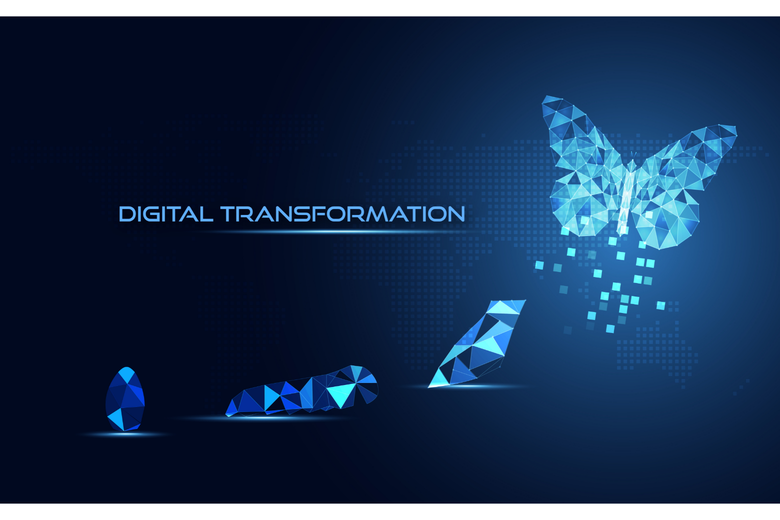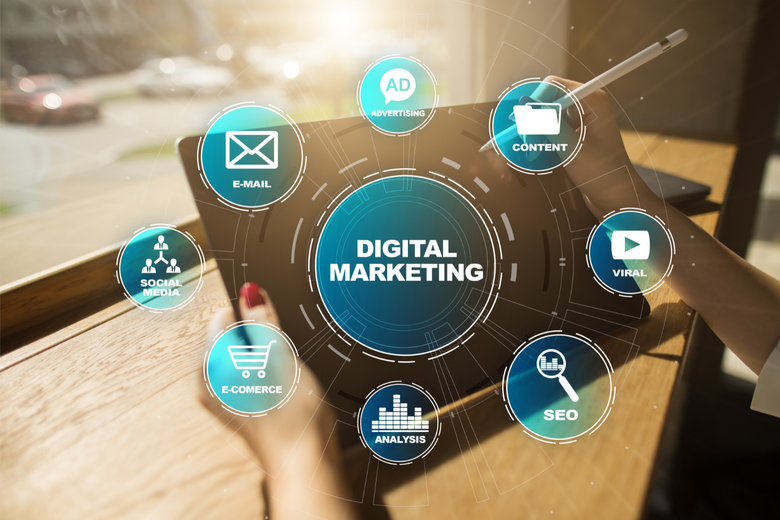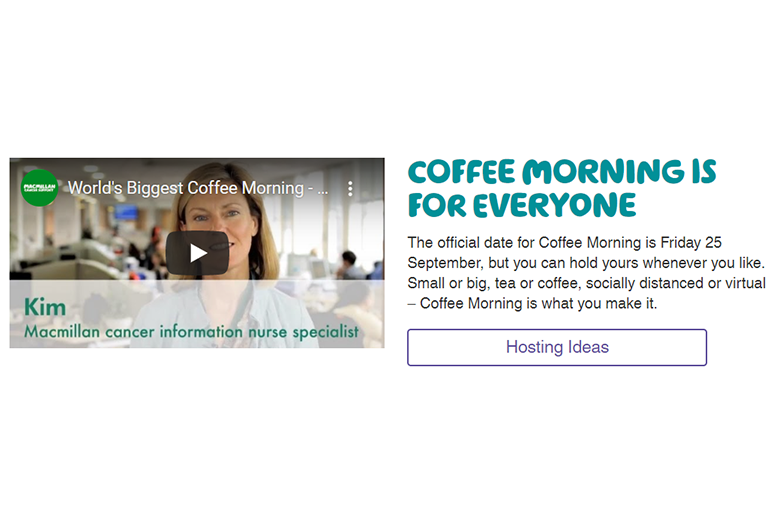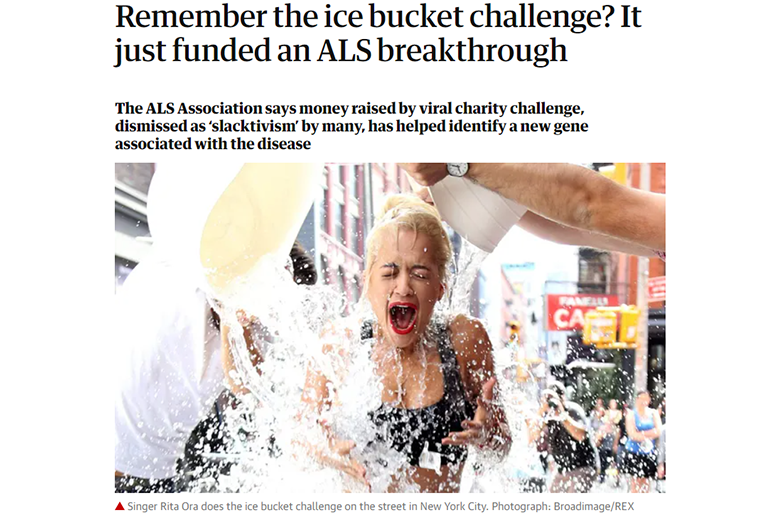
Vimal Patel11/01/21
5 min read

2020: A year which will go down in history for so many heart-wrenching and life-changing reasons.
The pressures being placed on charities are some of the most stark. In many areas, the help and support they provide are in greater need than ever before but this is against the backdrop of financial worries as physical fund-raisers have been cancelled and shops have been hit hard by steeply declining footfall.
New research into the impact of the coronavirus suggests that 10% of charities could close within 12 months and 80% say that their ability to deliver plans will be impacted.
But the research, conducted by Nottingham Trent University, Sheffield Hallam University and NCVO, offers one particular glimmer of light for the long-term future of the sector.

It reports that digital transformation is being accelerated - with more than 90% of participants moving service provision online - and this is the theme for a new series which we’re calling Digital Transformation: A new era for charities.
We’ll provide guidance on how charities can ramp up their digital and technology efforts and give you some ideas on getting the most out of our ever-evolving shift to the online world.
Generally, digital transformation is accepted as the use of technology to generate organisational improvements and so therefore covers key objectives such as increasing profitability and efficiency and, crucially, enhancing the experience for all levels of stakeholders. In the third sector space, this would include both service users and donors.
Why is this crucial? It’s because any type of digital transformation project must keep the stakeholder experience at the front of its mind. For example, if using technology to make a charity operationally more efficient will result in inferior service delivery then it should be crossed off the list.

In order for it to be successful, digitisation should be viewed through the eyes of the end-user. Will they receive the same level of service or better?
It is also vital that internal teams are brought along for the journey and kept informed at regular intervals. Charities can ill-afford to buy in digital solutions only for them to end up on the virtual shelf because of team disengagement.
A number of surveys on digital transformation have been conducted across a variety of sectors and barriers to success often highlighted are:
The first step for charities, therefore, is to understand what they’re aiming to achieve and then work backwards to create the plan to get there. That way you generate alignment and a clear path for staff, volunteers and donors.
Do you want to deliver more services online? Do you want to build your donor base? Do you want to engage with followers more often? Do you want to use digital marketing more effectively? Do you want to create new revenue streams? Do you want to automate lengthy, manual internal processes in order to free up time for higher-value work? All of these?
Jump in and head straight for one small piece of the jigsaw and you’re likely to miss the other important components of the puzzle.

Once you’ve established your goals, you’ll then want to create your roadmap on how to reach these - and to help you, our series will dive into some of the key areas on which to focus.
We’ll look at the platforms and technology at your disposal, how to get the most from your valuable data, digital marketing techniques, social media strategies, creating an e-commerce revenue stream and how to consider moving to a digital-first approach for campaigns.
donor or customer experience and it covers a range of topics such as websites, use of data, digital marketing, social media, e-commerce, artificial intelligence and more.

Websites, search engines and social media are elements of our daily lives, but, while these are significant areas for charities, digital transformation goes well beyond these.
You only need to look at how Just Giving has transformed how we raise and donate money while video conferencing service Zoom - now being used by some charities for service provision - is well on the way to follow in Google’s footsteps in becoming an Oxford English Dictionary verb.
As for websites, there are a number of platforms available for charities to showcase themselves. Here at Giant, we’re specialists in building sites on the open-source Python-based framework called Django, which provides enhanced scalability and flexibility, but other options, such as using the Wordpress content management system or Drupal, are available depending on your need.
Alongside your website, you’ll need to pick the right hosting solution, again depending on your requirements.
As well as all of your outward-facing platforms to capitalise on the continual user trend of increased digital behaviour, there are a wealth of internal systems which can improve the efficiency of your charity.
Cloud-based accountancy packages, HR and staffing management systems, Custom Relationship Management (CRM) platforms and document storage should all be considered in a true digital transformation plan.
These will assist with building a data-led organisation and, done right, will lead to evidence-based decision-making and a bucket of time saved so that staff are able to focus on the big issues which can build on the great work carried out by charities.

As the world has moved online, marketers have followed and digital marketing is now (or should be) a core component of a charity’s ongoing strategy. And when we say digital marketing, we don’t mean just social media.
Digital marketing covers a number of channels and tactics, all of which need to be rooted in a thought-out strategy underpinned by seasoned marketing principles such as who you are targeting and what you are aiming to achieve.
Are you looking to get in front of more people to whom you can provide support? Are you aiming to increase online donations? Are you seeking to spread the reach and awareness of your charity? Have you got all three - and maybe more - as objectives?
The temptation can be to jump into the online marketing world without any clear plan and this can lead to work with no clear purpose and, potentially, time and effort wasted. You might write some blogs, attempt to engage on social media and send out some emails...but have you stopped to ask why you’re doing this?
Digital marketing has the potential to fulfil a range of objectives and the tactics you use should depend on your desired outcomes.
For example, search - paid and organic - remains the primary traffic-driving channel across the web but organisations’ digital marketing efforts don’t always reflect this. Despite being around for a few years now, not all charities are taking advantage of Google Ad Grants in order to appear in paid search results (see below) while the ‘dark art’ of Search Engine Optimisation (SEO) isn’t on everyone’s radar.

Google Ad Grants can help Charity PPC
Data analysis covers a range of areas and has gone well beyond the use of Google Analytics to determine how visitors are interacting with your website and how deeply social media posts are engaged with.
CRMs are becoming invaluable within a number of sectors and are used to not only store information on supporters but to also keep track of all interactions with individuals. Thinking of sending an email campaign to your top 10% of donors or wanting to reach out to those who haven’t engaged with you for a period of time? A good CRM can help you manage these types of projects.
As with most emerging technology, there are a number of CRMs on the market. Just take a look at the comments on this post on UK Fundraising and you’ll see the likes of ThankQ, Blackbaud, Salesforce and Dynamics receive honourable mentions.
One very important consideration around data analysis is ensuring that it leads to actionable outputs. ‘Analysis paralysis’ can creep in - where data is continually delved into to hunt for a non-existent set of perfect answers - so it is vital to remember that data is there to guide and support you but it can’t make decisions for you.

But if you’re attempting to increase the number of online donations, then you need traffic to your website - and a well-considered search campaign can achieve that. You may well also want to delve into the area of Conversion Rate Optimisation (CRO) to help smooth the journey from website visitor to donator.
If you’re seeking to find more people who need your support, then conducting a spot of keyword research to find search terms which relate to your provision will result in areas your website and ongoing digital marketing can improve on.
And any third sector organisation should have a focus on their existing user base and their use of email marketing to encourage repeat interactions.
Digital transformation covers specifics such as systems technology, online donations, digital marketing and, potentially, service provision yet it also requires a shift in mindset to considering, practically, how charity operations could be digitised.
One of the cornerstones of charity fund-raising is the campaign - the major event(s) held to drive a spike in financial support. These can range from the renowned MacMillan coffee mornings - which have been held virtually through lockdown - to regional, community-focused initiatives. (We love the ‘Coffee Morning is what you make it’ message from MacMillan, by the way).

The increased usage of online across all of our lives opens up wider opportunities. Charities are no longer limited by geography and adopting a digital-first approach to their campaigns can widen their reach and appeal.
For example, just because you’re a local Bristol-based charity, this doesn’t mean that your campaign is limited to being held in the city. People across the world who have moved but still proudly count the city as their home can not only donate from afar but can get involved in events.
Practically, this requires a shift in thinking, beginning with how the campaign is going to run effectively online and, then, how it can be supported by offline efforts.
A significant advantage of such an approach is bringing together people supported by the charity in a group setting without the need to travel to a specific destination. And just imagine, in that group dynamic, when one of your patrons or ambassadors makes a guest appearance on screen, being able to do so without the need to find a three-hour window in their packed calendar.
Here at Giant, we are firm believers in digital being a force for good - and it’s how we view the world of social media despite some of the unsavoury headlines often carried by mainstream media.
The majority of charities have some sort of presence on social media - Facebook, Instagram, Twitter and more - but, as with digital marketing, it is important to have a strategy in place to help define their approach.
Social media can generate awareness, encourage participation in events and even be the vehicle for user-driven challenges - remember tipping buckets of iced water over our heads? Some people might be less aware that the Ice Bucket Challenge raised more than $100m in a month and helped fund breakthrough research in Amyotrophic Lateral Sclerosis.

As with a lot of successful marketing, social media thrives on creativity and differentiation. We are far more likely to share or engage with something which makes us stop in our feed-scrolling tracks; a post which tugs on our heart-strings or feeling as though we’re part of something bigger, in the case of the Ice Bucket Challenge.
Of course, highlighting key dates in a charity’s calendar or posting important updates can be conducted through social media channels, but investing time into the creative process can really pay dividends here.
And social media can be the perfect vehicle to carry out that digital-first approach for campaigns.
Online shopping is booming - and the pandemic has only accelerated this, with 10 years’ worth of growth witnessed in just six months.
This monumental shift in behaviour is an area savvy charities are benefiting from, adding a new revenue stream to their bottom lines.
Charities can sell branded products on platforms which seamlessly plug into the core websites. The likes of Diabetes UK and Help for Heroes, to name just two, manage online stores and offer items such as clothing and gifts.


The world’s fastest-growing e-commerce platform is Shopify and it offers a specific product for not-for-profits. Other e-commerce platforms worth considering include Woocommerce - a plug-in for Wordpress - and Magento 2.
You can also encourage supporters to use the likes of Amazon Smile and Savoo Search, both of which will result in your charity benefiting from extra revenue.
As you can see, digital transformation goes well beyond simply building a new website or setting up some social media profiles.
It is about digitising your charity across all areas to help it run more efficiently, conduct elements of service provision and generate increased awareness and donations.
The world is more digital now than ever before so how is your charity reacting?
*Follow our series ‘Digital Transformation: A new era for charities’ as we dive deeper into some of the key areas for your charity to focus on.
Giant Digital specialises in charity website design and development. For over 10 years now we've been developing platforms and solutions that integrate seamlessly into your organisation. If you would like to know how to keep up with the latest digital innovations within the charity sector, please don't hesitate to get in touch!